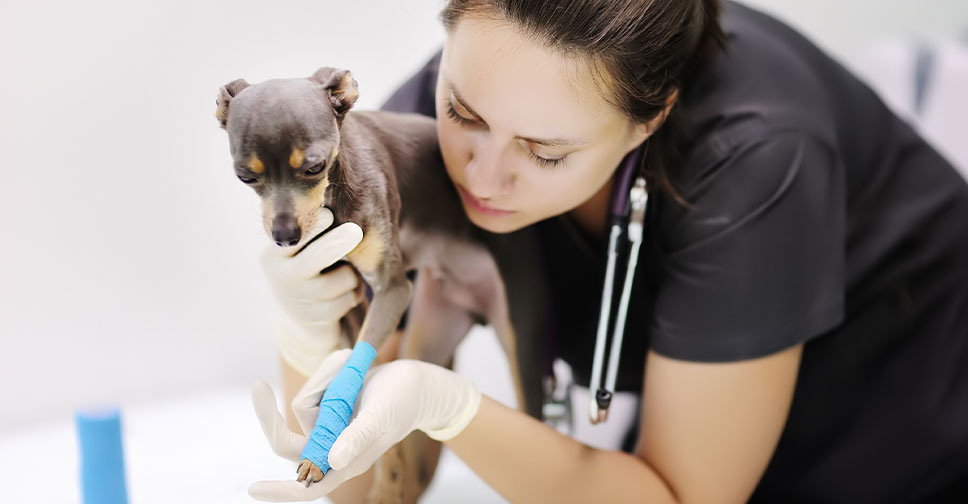
Luxating Patella
What is a Luxating Patella?
Patella is the medical term for kneecap, the bone that forms the front of the knee (known as the “stifle” joint in animals). The patella should stay within the grooves of the thigh bone (“condylar groove”). In some animals the patella sometimes slips outside of the groove, and this is called patella luxation.
What are the effects of a luxating patella?
Luxating patella in humans (“dislocated knee”) is incredibly painful. The same condition in animals seems to have variable effects – some dogs give a little “skip” of the hind leg; others show lameness or a locking up of the hind leg at an odd angle. When it realigns, they often continue as though nothing happened! Other dogs seem quite painful and get joint swelling and soreness. Generally smaller breed dogs seem to have less sign of pain, but this can be variable.
What causes luxating patella?
A luxating patella in dogs and cats can be from traumatic injury. More commonly, it is associated with joint or limb structure abnormalities, such as the groove of the femur where the patella sits being too shallow, or the area where the patella attaches to the shinbone (tibia) being displaced. These limb and joint change the forces placed on the stifle and, in turn, luxation of the patella.
How is a luxating patella diagnosed?
Your veterinarian will discuss the clinical signs you have noted and it is usually apparent on examination. Patella luxations are graded from Grade I to IV.
Grade I: The kneecap dislocates out of its normal position with manual pressure but returns immediately when it’s released. Grade I is usually found incidentally on examination by a vet and usually doesn’t result in clinical symptoms.
Grade II: The kneecap readily shifts out of its normal position with manual pressure and remains displaced until it’s manually adjusted. Lameness is usually intermittent when the patella luxates out of its normal position and can be painful if there’s damage to the cartilage caused by frequent luxation.
Grade III: The kneecap is disjointed most of the time but can be returned to its normal position with manual pressure; however, once this pressure is removed, the patella begins to spontaneously luxate. Due to limb structure changes and/or cartilage damage from repeated luxation, animals at this grade may experience more pain and exhibit more lameness.
Grade IV: The kneecap is permanently dislodged from its normal position and cannot be manually replaced. Severe limb structure changes are usually present, which can lead to lameness and otherwise impaired mobility, and reduced limb function.
Some animals with a luxating patella may also have concurrent rupture of their cranial cruciate ligament — the human equivalent of an ACL in the knee. This is particularly if they have suddenly become very lame.
Do luxating patellas need surgery?
Some animals have severely luxating patellas but show few symptoms when young but can become very arthritic if they do not have corrective surgery.
Most grade I and grade II cases are treated through pain and anti-inflammatory medications, weight management and exercise restriction. Physiotherapy may also be helpful, as it can help your dog rebuild muscle strength, we are happy to refer you to explore this. Some dogs with grade II who experience significant pain from cartilage damage and significant lameness may benefit from surgery to improve their quality of life. Surgery is usually indicated for both grade III and grade IV patellar luxation as they can cause significant lameness and pain.
Surgeries for dog patella luxation are divided into those that correct either bony or soft tissue structures. No matter the surgery, the overall goal is to realign the supporting structures of the knee joint to allow the kneecap to move normally and stay in the groove of the femur. The exact surgery required is very specific to the animal, so a discussion with the surgeon prior to surgery is always needed.
